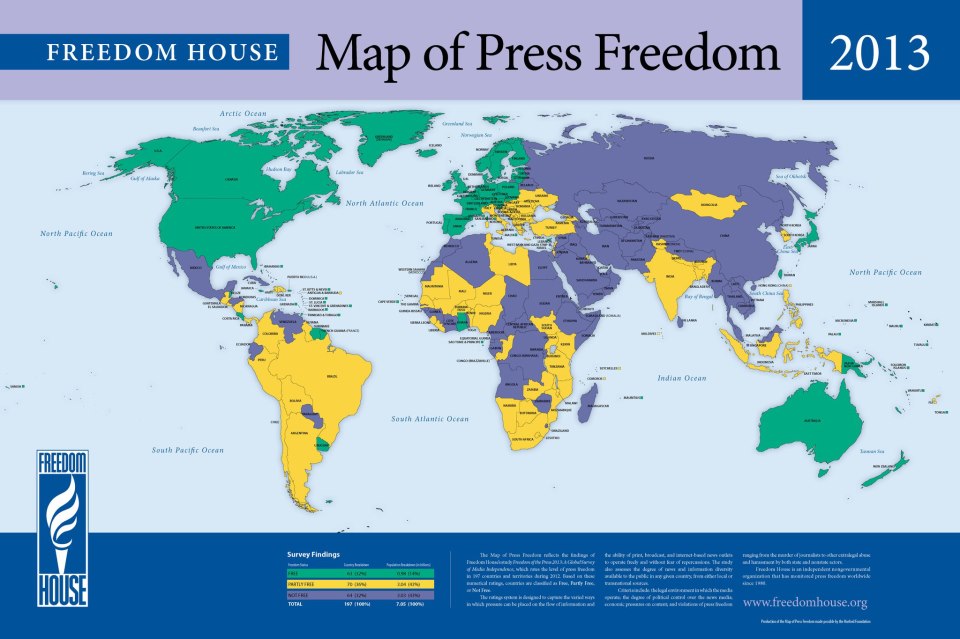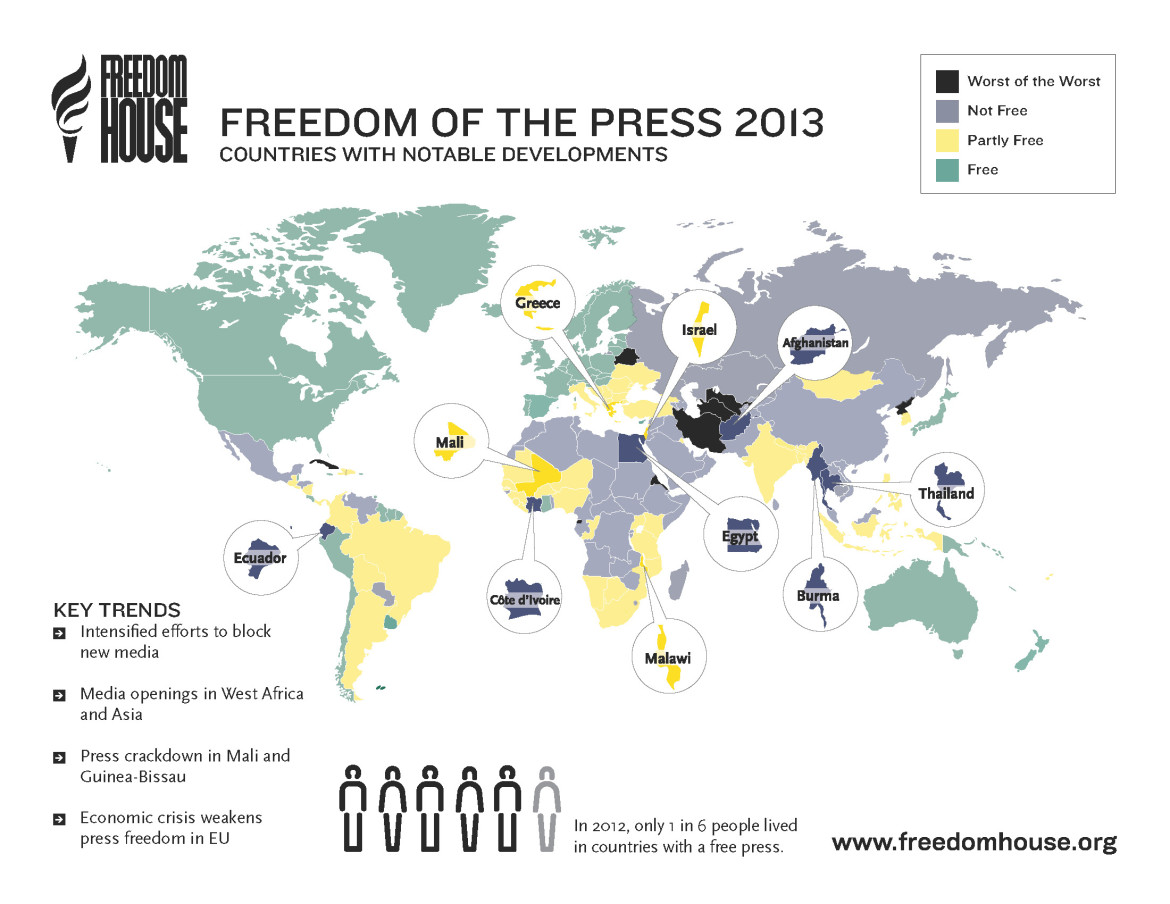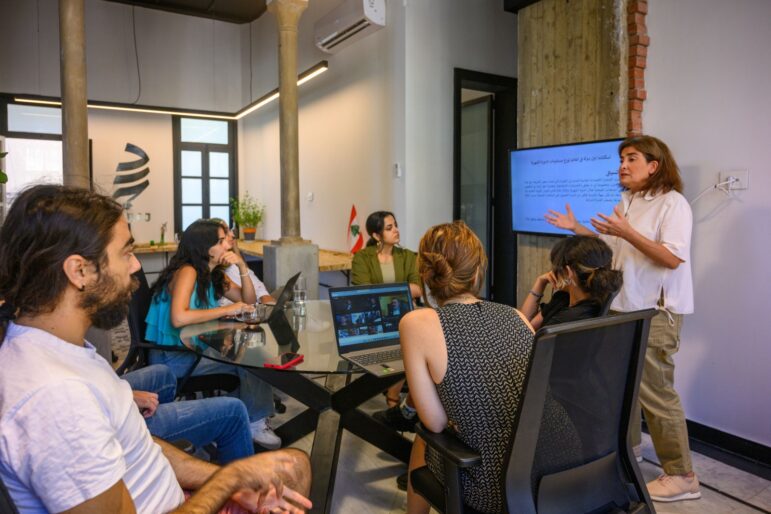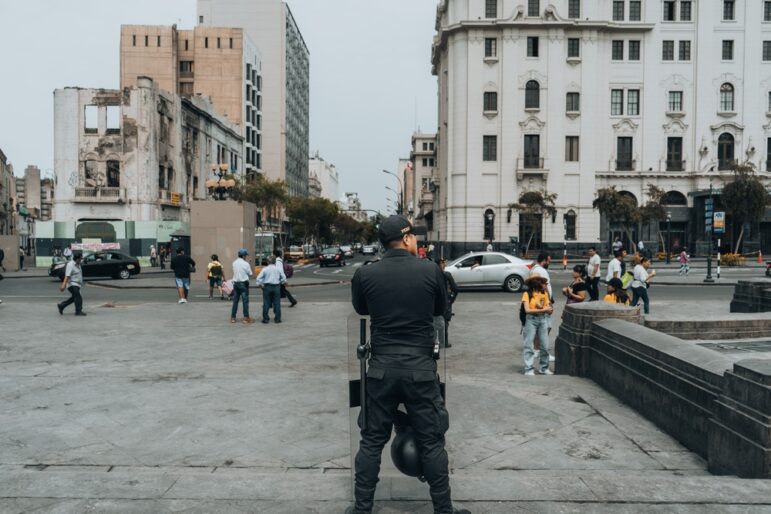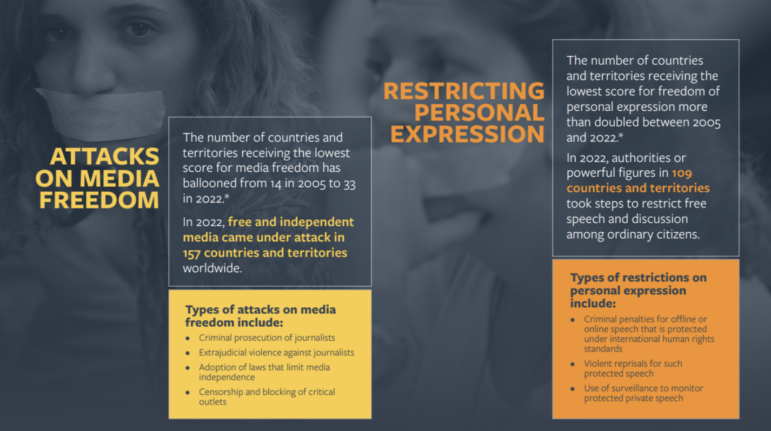

Less than 14% of World Lives in Countries with Free Press
The percentage of the global population living in countries with a free press is at the lowest level in more than a decade, according to the findings of Freedom of the Press 2013: A Global Survey of Media Independence, a new report by the Washington, D.C.-based nonprofit Freedom House. The report found that just 14 percent of the world’s population — about one in six people—live in societies “where coverage of political news is robust, the safety of journalists is guaranteed, state intrusion in media affairs is minimal, and the press is not subject to onerous legal or economic pressures.”
The overall decline in press freedom is highlighted by various cases. As a region, Latin America experienced a further tightening of controls on the media, led by Ecuador and Paraguay, which dropped from Party Free to Not Free. Moreover, there was an important downturn in Mali and a significant deterioration in Greece. The report also notes uneven conditions in the Middle East in 2012, which again ranked as the world’s worst region for press freedom.
The report surveyed 197 countries and territories during 2012, which were rated Free, Partly Free, and Not Free. The groups broke down almost equally in thirds. There were 63 (32 percent) rated Free, 70 (36 percent) rated Partly Free, and 64 (32 percent) rated Not Free. The numbers marked a clear shift toward the Not Free category over 2011, which identified 66 Free, 72 Partly Free, and 59 Not Free countries and territories.
The eight worst-rated countries: Belarus, Cuba, Equatorial Guinea, Eritrea, Iran, North Korea, Turkmenistan, and Uzbekistan.
This is the 33rd year of the Freedom House survey, making it the oldest of various indexes that measure press freedom. (Other surveys include IREX’s Media Sustainability Index and Reporters Without Borders’ Press Freedom Index). The survey is based on an extensive questionnaire submitted to country experts, and a scoring system that assigns a numeric rating to a country’s level of press freedom. The index is privately funded, with support from various U.S. and European foundations and individual donors.
Below you can find some key infographics drawn from the report:
Freedom House
This infographic highlights countries with notable developments for press freedom during the past year.





